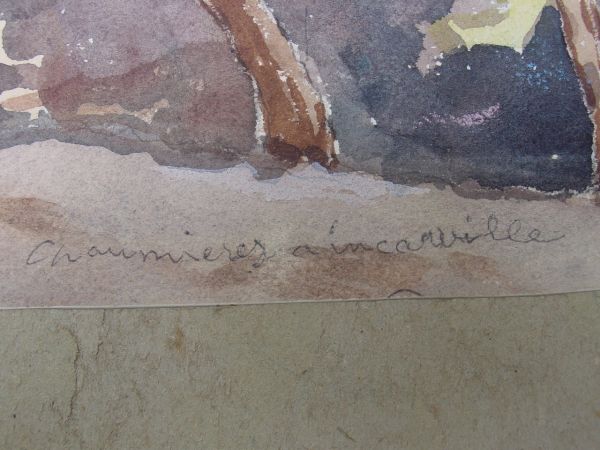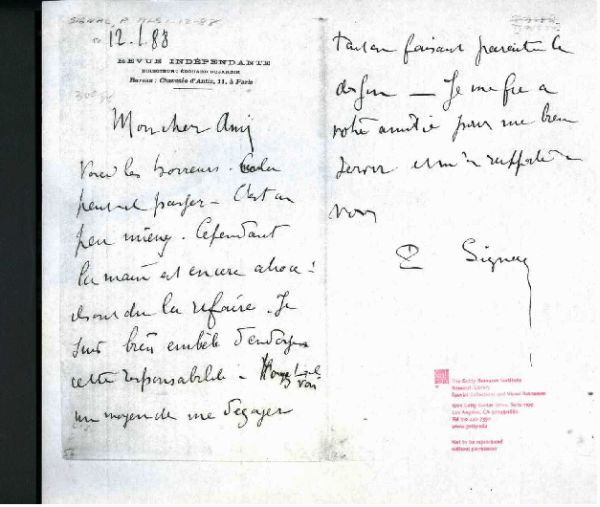FORENSIC HANDWRITING ANALYSIS
When there is handwriting on a painting, it provides an additional opportunity to prove that it is the work of the artist.
The most common inscriptions are the date, the location, the title and the name of the sitter if it is a portrait, or if friends or family appear in the composition.
Kroyer Names
In the painting above, Kroyer has written the names of everyone who is seated around the table.
We analyze all handwriting very carefully. Here is what we had to say about three words attributed to the famous French post-impressionist Paul Signac:
Tchepik
Signac
The inscription refers to “chaumieres”, which are traditional thatched roof houses. Incarville is a village in Normandy. The inscription reads “chaumieres a Incarville.” Examples of authentic Signac handwriting from records held at the Getty Museum are shown below.
Authentic Signac handwriting example, 1887
Authentic Signac handwriting example, 12 Jan. 1888
Authentic Signac handwriting example, 1897
The first four letters are fluent enough, but the writer fumbles after that. The final word is almost childlike in its confusion. The “r” changes from a peaked “r” in the first word, to a flat “r” in “Incarville.” The “v” and the “i” in Incarville are a mess, and the double “l’s” point in different directions. The inscription looks like it was written by someone unfamiliar with French, and who was not writing with normal cursive confidence. The Signac letters are written with a consistent right slope, while the subject inscription is incoherent, but mostly vertical. One “i” is vertical, and another is angled left at 45 degrees. It is clear that Signac does not usually loop his “e.” The letters “e” in the subject’s inscription are looped.
The subordinate “m” appears several times in both Signac notes and is very consistent: a pronounced first stroke, matched by two tight following points in the loop, similar to a zig-zag. Compare this with the “m” in “chaumieres”. It is wider, has one round loop, and one pointed loop. Signac’s subordinate “n” is likewise sharply pointed, unlike the “n” in the watercolor inscription. The Signac subordinate “a” is tight, sharp, sometimes open and sometimes closed. The subject inscription has round, labored letters “a”. The only subordinate “h” in Signac’s formal note has a characteristic hook on the final stroke, missing from the “h” in “Chaumieres.”In conclusion, there is virtually no similarity between Signac’s handwriting and the inscription on the watercolor.
To have a similar analysis performed on your painting, please contact us






